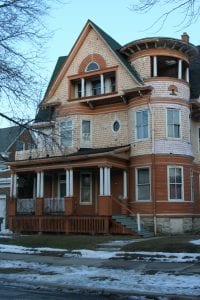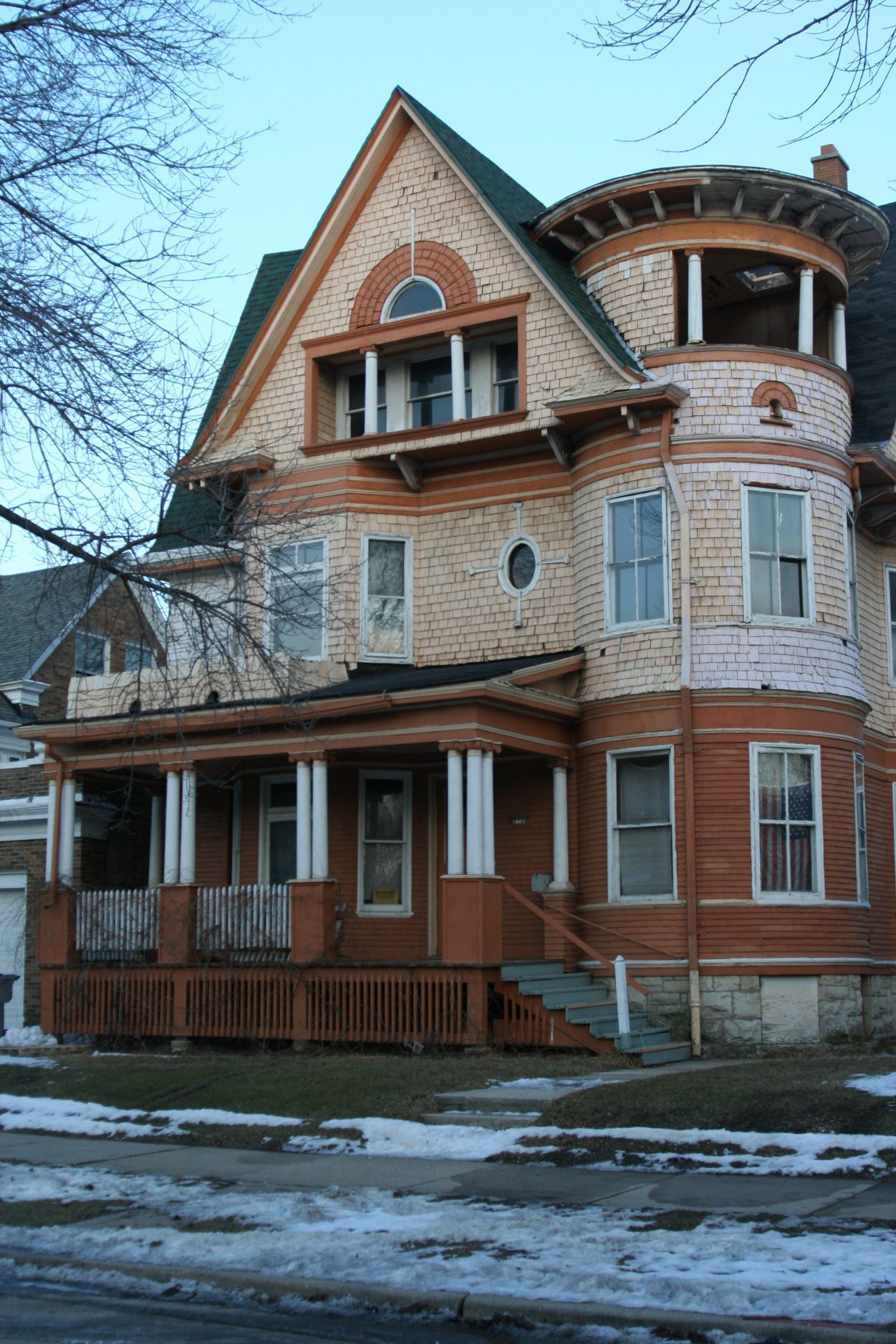
Photo by Stephanie Allewalt
How can property owners become the stewards of a carefully crafted local vision?
Milwaukee’s “Queen Anne,” one of the few Queen Annes in such a historic setting, is owned by an organization that has thrived on that same block for over 100 years. The Queen Anne is in nearly original condition, and architecturally significant because of its outstanding turn-of-the-century Queen Anne style residential design. Designed by architects Marshall & Ryder, the residence is currently assessed at $208,800.
It’s vacant, it needs work, and it was for sale.
The owner (who will remain anonymous here) recently invited stakeholders in the Brewers’ Hill neighborhood, in which this Queen Anne is located, to purchase the building for $1 and move it to another location of choice. Unfortunately, interested parties were given a narrow window of one week to respond with a commitment before the demolition process would move forward. Barring a last-minute deal, demolition was likely.
The City of Milwaukee’s Northeast Side Area Plan, the plan area in which our Queen Anne is nestled, outlines a specific recommendation in the section on implementation: Preserve historic buildings, sites, and districts (p. 283). City staff and the consultant team eloquently elaborated on this frequently cited urban planning recommendation with a beautiful depiction of why local governments should retain these structures, regardless of condition:
“Preserve historic buildings, sites and districts as part of the core value of cities and central to the experience of urban places. All urban areas have a unique history, many with outstanding or landmark features—geographic, natural and historic. Most are irreplaceable. Be proactive about designating, maintaining, and keeping them “alive” through adaptive reuse. Consider them to be as worthy of management as financial assets (stocks, bonds, etc.) in a community investment portfolio.”
The last sentence, in particular, catches my interest. If our Queen Anne is worthy of a place in Milwaukee’s community investment portfolio, why were neighbors offered such a narrow window for the structure’s survival? The sole reason the property owner is invested in this block is because of a rich history. Shouldn’t that be celebrated with, at the very least, a more proactive approach to rehabilitating the very structure which portrays some of that rich history?
Owners of unique properties, in any given geography, should have support for understanding precedent. From the plan to implementation, we have a responsibility to ensure that our community’s vision can be executed seamlessly.
Click here to download a PDF of Milwaukee’s Northeast Side Area Comprehensive Plan.





Comments